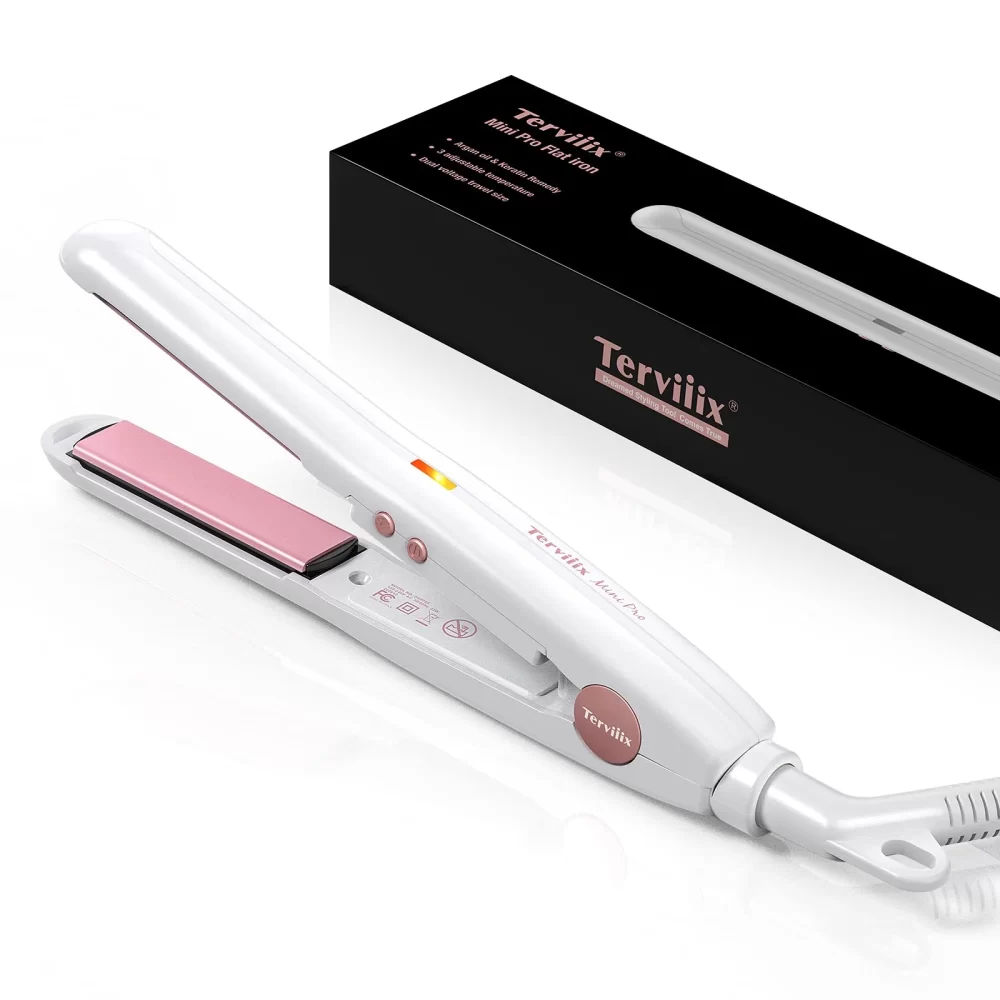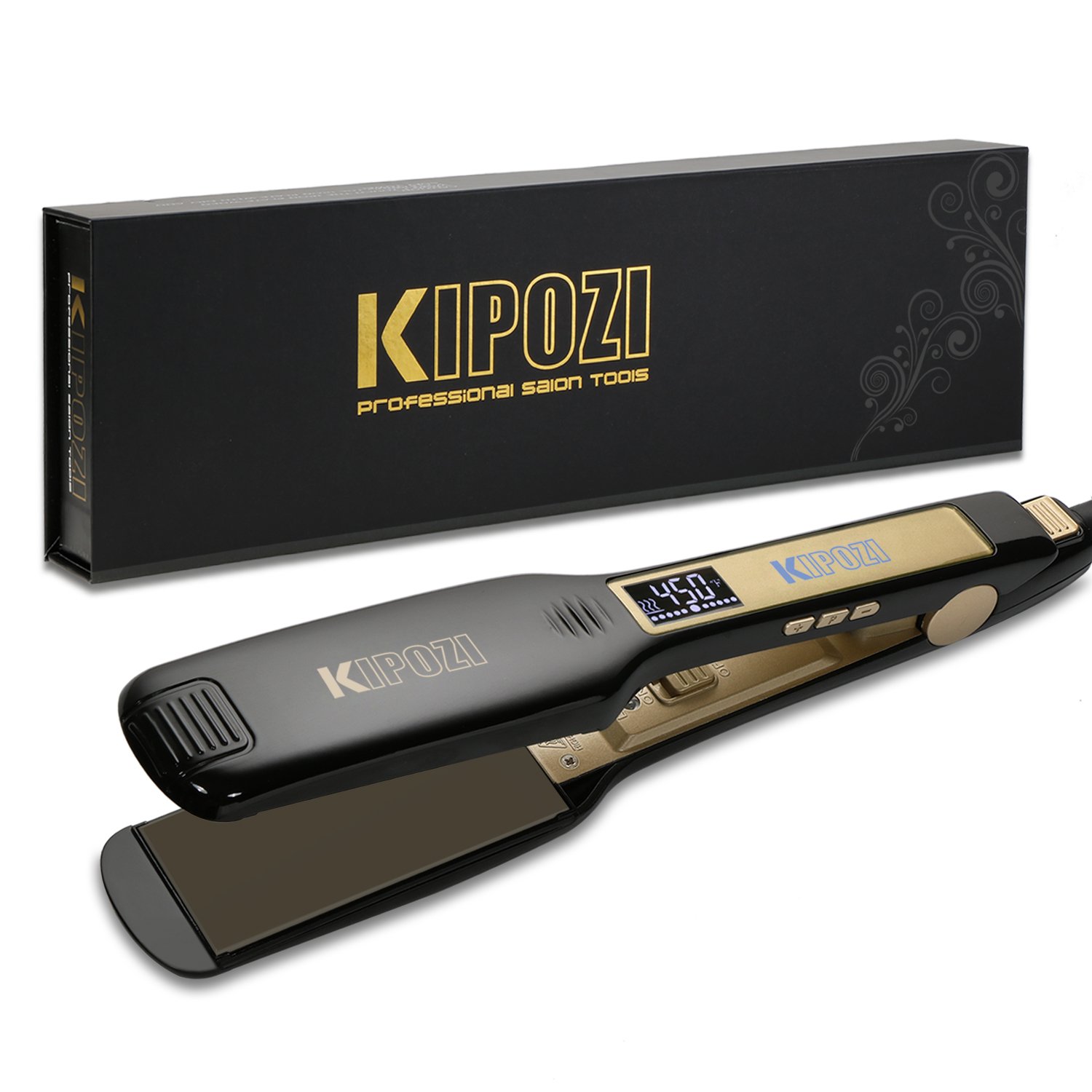Achieving sleek, smooth hair has never been easier thanks to the versatile flat iron. Whether you’re aiming for a straight look or adding waves and curls, knowing how to use a flat iron effectively can transform your hair styling routine. This guide delves into the essentials of flat iron usage, ensuring you achieve salon-quality results at home.
Understanding Your Flat Iron
Before diving into the techniques, it’s crucial to understand the tool you’re using. Flat irons come in various types, sizes, and materials, each offering different benefits.
Types of Flat Irons
There are primarily two types of flat irons:
- Traditional Flat Irons: These are the classic straighteners with two flat plates ideal for straightening hair.
- Ceramic and Titanium Flat Irons: These use ceramic or titanium plates that distribute heat more evenly, reducing damage and providing a smoother finish.
Plate Sizes and Their Uses
Flat irons come in different plate widths, typically ranging from 1 inch to 2 inches.
- 1-inch Plates: Best for short to medium hair lengths and creating tight curls or waves.
- 1.5-inch Plates: Versatile for most hair types and styling needs.
- 2-inch Plates: Ideal for thick, long hair and achieving straighter, sleek styles.
Material Matters: Ceramic vs. Titanium vs. Tourmaline
- Ceramic Plates: Provide even heat distribution and are gentle on hair, reducing the risk of heat damage.
- Titanium Plates: Heat up quickly and maintain consistent temperatures, perfect for thick or coarse hair.
- Tourmaline Plates: Emit negative ions that help reduce frizz and enhance shine, suitable for all hair types.
Preparing Your Hair for Flat Ironing
Proper preparation is key to achieving the best results while minimizing damage.
Step 1: Start with Clean, Dry Hair
Always flat iron your hair when it is completely dry. Using flat irons on damp hair can cause damage and scaly hair cuticles.
Step 2: Use a Heat Protectant
Applying a heat protectant spray or serum shields your hair from high temperatures, preventing dryness and breakage. Ensure it’s evenly distributed from roots to ends.
Step 3: Detangle Your Hair
Use a wide-tooth comb or a detangling brush to remove knots and tangles, ensuring smooth, even strokes with the flat irons.
Step 4: Section Your Hair
Dividing your hair into manageable sections allows for more precise and efficient styling. Use clips to separate hair into top and bottom sections, then further divide each section as needed.
How to Use a Flat Iron: Step-by-Step Guide
Now that your hair is prepped, follow these steps to master how to use a flat iron effectively.
Step 1: Heat Up the Flat Iron
Plug in your flat iron and set it to the appropriate temperature based on your hair type:
- Fine or Damaged Hair: 300-350°F (149-177°C)
- Normal Hair: 350-375°F (177-191°C)
- Thick or Coarse Hair: 375-400°F (191-204°C)
Allow the flat iron to reach the desired temperature before styling.
Step 2: Take a Section of Hair
Starting from the bottom layers, take a small section of hair about 1-2 inches wide. Smaller sections ensure a smoother finish.
Step 3: Clamp the Flat Iron
Place the flat iron near the roots of the hair section. Avoid clamping too close to the scalp to prevent heat damage.
Step 4: Glide the Flat Iron Down
Slowly glide the flat iron down the length of the hair strand in one continuous motion. Avoid multiple passes over the same section to minimize heat exposure.
Step 5: Repeat on All Sections
Continue this process, working through each section of your hair until you’ve achieved the desired straightness or style.
Step 6: Finish with a Hair Serum or Shine Spray
To enhance shine and lock in your style, apply a lightweight hair serum or shine spray once you’ve finished flat ironing.
Advanced Flat Iron Techniques
Once you’re comfortable with the basics, exploring advanced techniques can help you diversify your hairstyles.
Creating Loose Waves
To achieve natural-looking waves:
- Take a larger section of hair.
- Clamp the flat iron at the mid-length of the hair.
- Twist the flat iron away from your face as you glide it down.
- Repeat on all sections for consistent waves.
Adding Curls
For defined curls:
- Use a smaller section of hair.
- Clamp the flat irons at the base of the hair.
- Rotate the flat irons 180 degrees away from your face while pulling it through the hair.
- Hold the hair in the clamp for a moment before releasing.
Straightening Braided Hair
To straighten braids:
- Lightly twist each braid.
- Use a flat iron to smooth out each section, applying minimal heat to avoid loosening the braid.
- Finish by gently untwisting for a sleek look.
Maintaining Healthy Hair with Flat Iron Usage
Regular use of a flat iron can lead to hair damage if not managed correctly. Follow these tips to maintain healthy hair.
Limit Heat Exposure
Avoid using high temperatures on a daily basis. Stick to the lowest effective temperature and limit flat ironing to a few times a week.
Invest in Quality Products
Using a high-quality heat protectant and nourishing hair products can mitigate damage and keep your hair healthy.
Regular Haircuts
Trimming your hair every 6-8 weeks helps remove split ends and maintains overall hair health.
Deep Conditioning Treatments
Incorporate deep conditioning treatments into your routine to replenish moisture and repair any damage caused by heat styling.
Troubleshooting Common Flat Iron Issues
Even with proper technique, you might encounter some challenges. Here’s how to address common flat iron problems.
Hair Won’t Stay Straight
If your hair isn’t holding the straight style:
- Ensure Proper Heat: Higher temperatures may be needed for thicker hair.
- Use a Strong Hold Serum: Helps lock in the straight style.
- Cool Down with a Blast of Cold Air: Using a cool setting on your hairdryer precedes the flat iron to seal the cuticles.
Excessive Frizz
To combat frizz:
- Use Tourmaline Flat Irons: They emit negative ions that reduce frizz.
- Apply Anti-Frizz Products: Serums or creams help control frizz after styling.
- Avoid Moisture: Make sure your hair is completely dry before flat ironing.
Uneven Straightening
If your hair is uneven:
- Section Hair Properly: Small, manageable sections ensure uniform straightening.
- Consistent Speed: Glide the flat iron at a steady pace without stopping.
- Check Flat Iron Plates: Dirty or damaged plates can cause uneven heat distribution.
Choosing the Right Flat Iron for Your Hair Type
Selecting the appropriate flat iron tailored to your hair type can enhance your styling experience and results.
For Fine or Thin Hair
Opt for flat irons with smaller plates (1 inch) and ceramic or tourmaline materials to reduce heat exposure and prevent breakage.
For Thick or Coarse Hair
Larger plates (1.5 to 2 inches) made of titanium are ideal as they can handle the density and require higher temperatures for effective straightening.
For Curly or Wavy Hair
Flat irons with adjustable temperature settings and tourmaline plates help manage texture while minimizing frizz.
For Long Hair
Long plates are beneficial as they can cover more hair in one pass, reducing overall styling time.
Safety Tips When Using a Flat Iron
Ensuring safety while styling is paramount to prevent accidents and hair damage.
Avoid Excessive Heat
Always use the lowest effective temperature for your hair type to minimize damage.
Keep Flat Irons Away from Water
Dry hair is essential. Using flat irons on wet or damp hair can cause severe damage and increase the risk of electric shock.
Use Heat Protectants
Never skip applying a heat protectant to shield your hair from high temperatures.
Unplug When Not in Use
To prevent electric hazards, always unplug your flat irons after use and let it cool down before storing.
Store Properly
Store your flat irons in a safe, dry place away from children and pets to avoid accidents.
Frequently Asked Questions About Using Flat Irons
How Often Can I Use Flat Irons?
It’s recommended to use a flat iron no more than 2-3 times a week to prevent heat damage and maintain hair health.
Can I Use Flat Irons on Short Hair?
Yes, especially with smaller plates. Flat irons are excellent for adding waves or curls to short hair.
What Should I Do If My Hair Gets Damaged?
If your hair becomes damaged, reduce flat irons usage, increase moisturizing treatments, and consider trimming split ends to promote healthier growth.
 Conclusion:
Conclusion:
Understanding how to use a flat iron is essential for achieving the hairstyles you desire while maintaining healthy, shiny hair. By selecting the right flat irons, preparing your hair properly, and following the correct techniques, you can create a variety of styles from straight and sleek to wavy and curly. Remember to prioritize hair health by using heat protectants, limiting heat exposure, and incorporating regular hair care routines. With these practices, your flat iron will be a valuable tool in your beauty arsenal, helping you achieve gorgeous, salon-quality hair every day.

